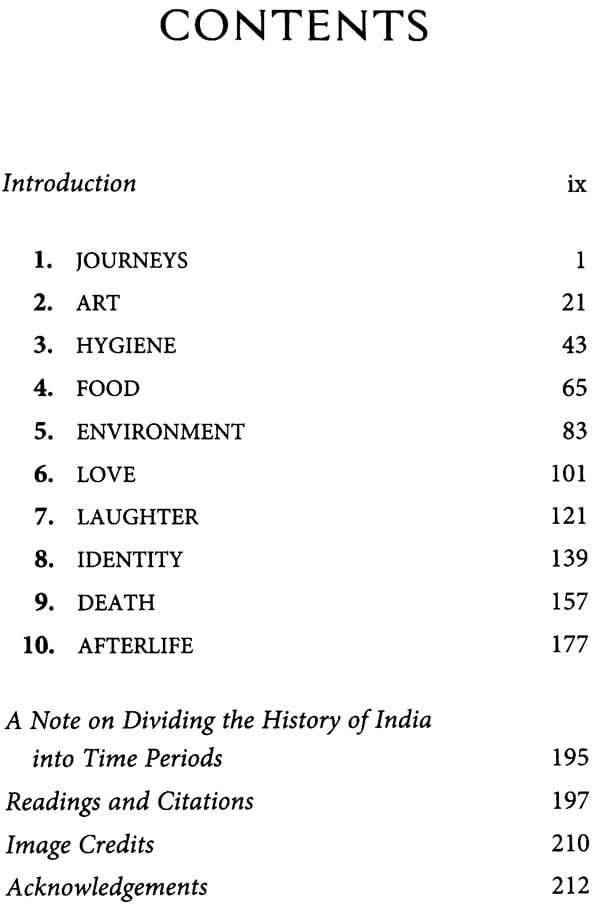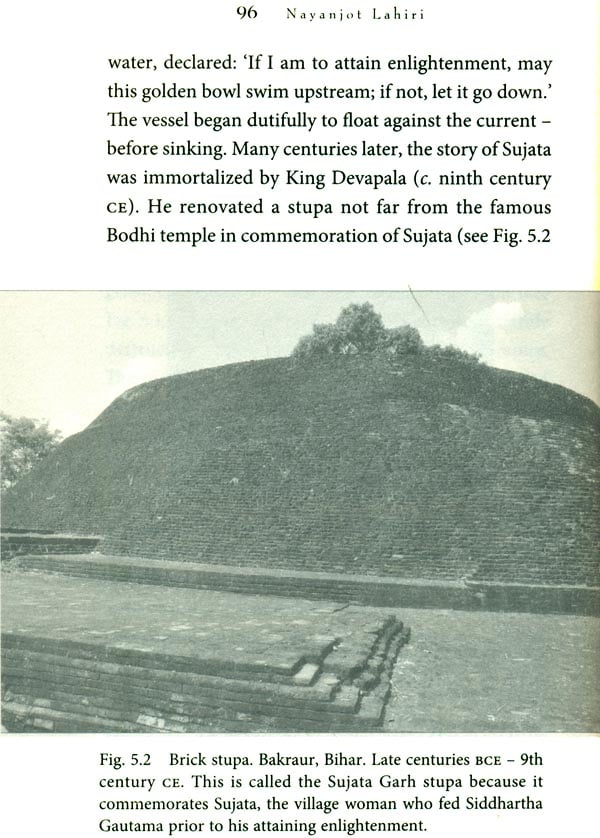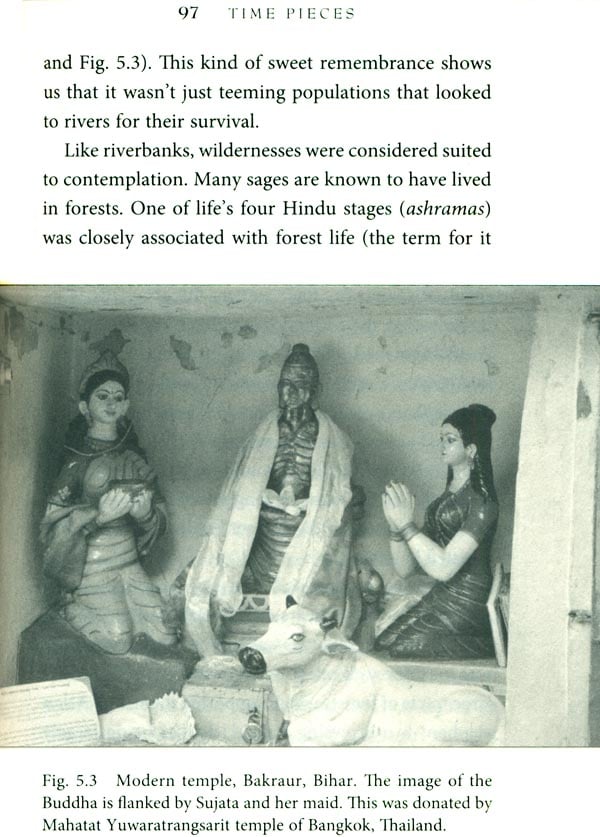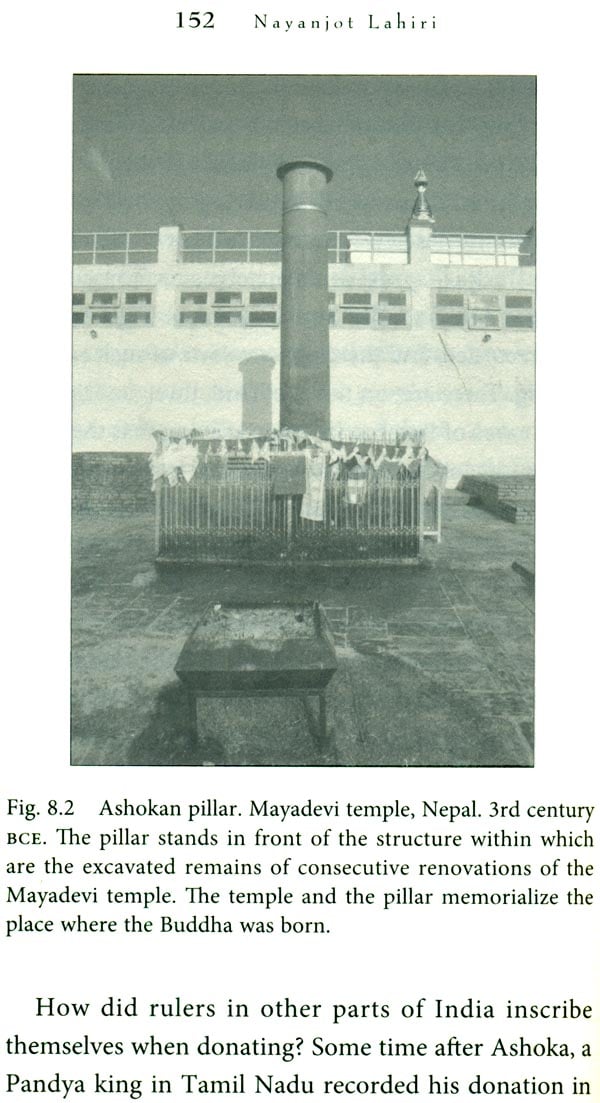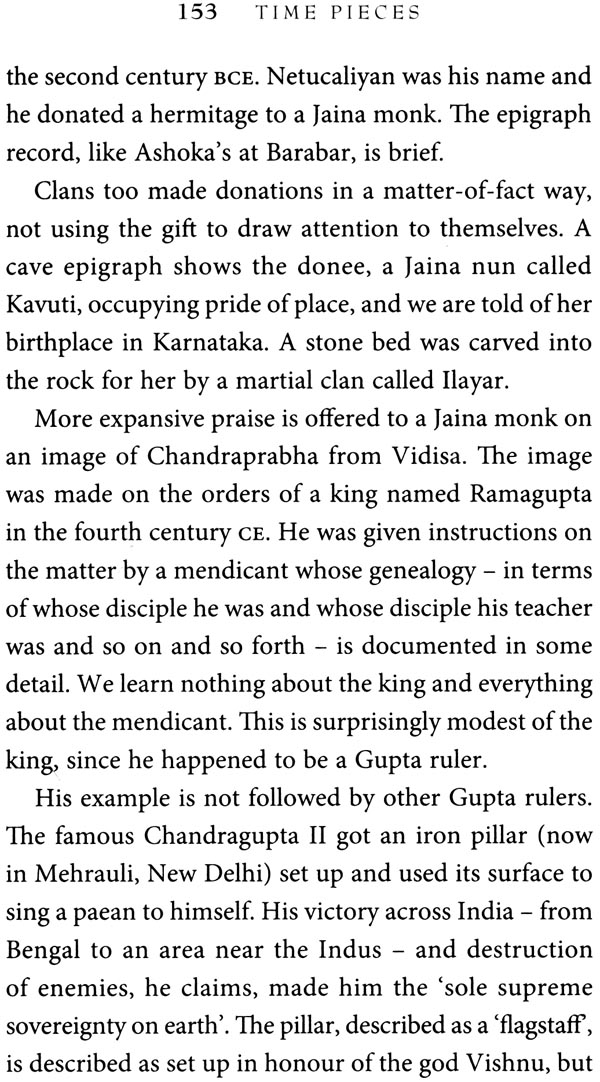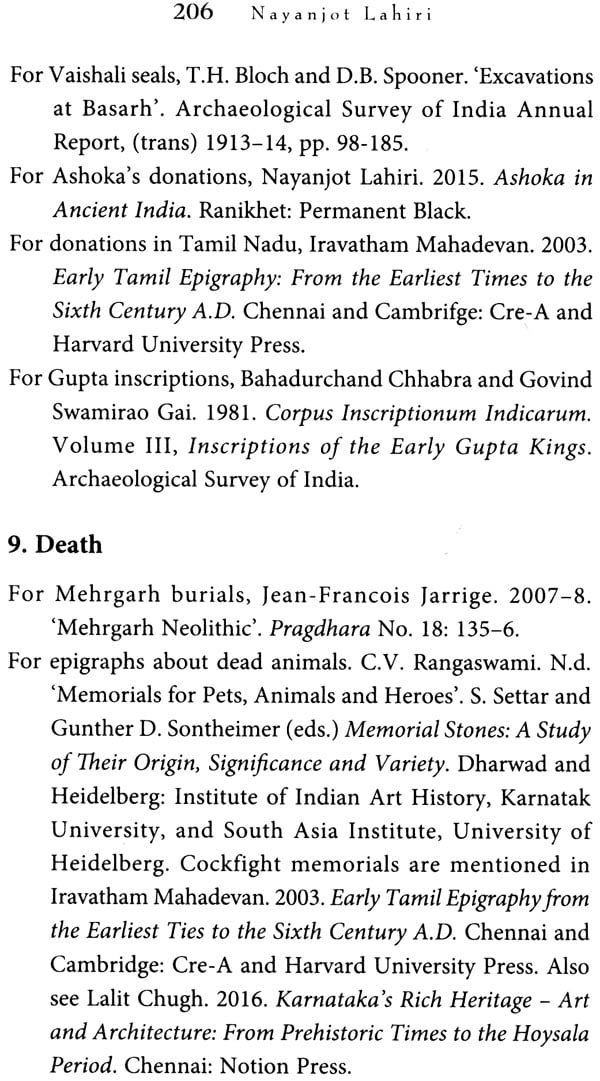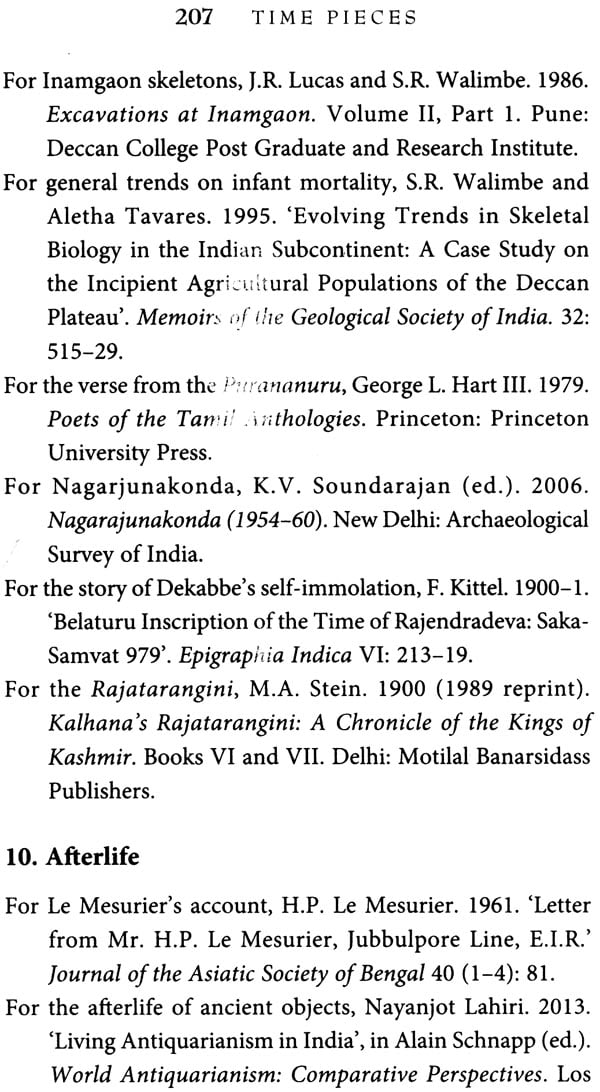
Time Pieces (A Whistle-Stop Tour of Ancient India)
Book Specification
| Item Code: | NAP929 |
| Author: | Nayanjot Lahiri |
| Publisher: | Hachette India |
| Language: | English |
| Edition: | 2018 |
| ISBN: | 9789351952473 |
| Pages: | 234 (29 B/W Illustrations) |
| Cover: | PAPERBACK |
| Other Details | 7.50 X 5.00 inch |
| Weight | 200 gm |
Book Description
The oldest surviving love graffiti on a cave wall immortalizing an intimate bond in the third century BCE; charred seeds and chewed animal bones that provide evidence of a peoples' food obsessions; architectural minutiae that point to the alarming regression of a civilization's potty habits; intriguing sculptures that reveal myriad facets of the human-animal relationship ...
In Time Pieces, award-winning historian Nayanjot Lahiri whimsically sifts through intricate clues left behind by the early inhabitants of the Indian subcontinent - in plaques and inscriptions, fragments of jewellery, bones and tools, poetry, art and pottery - to reveal to us our ancient land in all its variety, splendour, complexity and contradictions.
Sparkling with wit and reflective of a scholar's keen and curious energy, this delightful volume seamlessly connects the past to the present and a civilization to the world beyond.
Nayanjot Lahiri is Professor of History at Ashoka University. The recipient of the 2013 Infosys Prize in Humanities (Archaeology), she is the author of many books, including the award-winning Ashoka in Ancient India (2015). Her most recent book is Monuments Matter: India's Archaeological Heritage since Independence (2017).
THE HUMAN PAST CAN BE WRITTEN ABOUT WITH AS much brevity or elaboration as one wants. It is possible to write the story of horn in evolution on a single page or the lifecycle of Neanderthals over an entire volume. When ancient India is surveyed at great length, as it usually is, the work is no doubt valuable but it is more likely to be consulted than read. Mine is a small book about that large and fascinating subject, written to be widely read with, I hope, enjoyment.
My ancient India stretches back here nearly two million years when hominins, originally of African ancestry, journeyed across Asia to reach Tamil Nadu. Their travel and lives are as palimpsests to the historian's eye, recoverable from the stone tools they used and the places where they lived.
By the time one reaches the end of the first thousand years of the Christian Era (that is, the first millennium CE), ancient India has a different flavour. All kinds of literature has flowered by this time, providing insights into ancient ways of thinking about society and politics, love and laughter. When writing of this period I found it necessary to sometimes bring in medieval and modern ideas to bear on what I was looking at, in part to show contrasts and continuities between what is ancient and what is not.
Notwithstanding the long time period that is my subject, this book is neither a connected history nor even a complete history of the themes that form the subjects of its chapters. All I attempt here is to provide glimpses into ancient India in order to explore a few facets of a world I find fascinating, and which are important from the contemporary perspective: food and hygiene, art and identity, environment and emotions, journeys in antiquity and in the afterlife, linking small phenomena to the larger world of the Indian subcontinent and beyond.
Who were the first painters of India? How did ideas about hygiene, such as where people should pee and shit, change over time? Who were ancient India's 'first couple'? How visible are dead animals vis-a-vis dead humans? Are afterlives similar to or different from historical lives? It is with the aim of exploring these perhaps eccentric but nonetheless intriguing questions that I set about writing this book. The result, I believe, is a wide and untidy spectrum through which we look at ways of seeing, and understanding how things were done in, ancient India.
The 'India' within the subcontinent's name derives from the Indus, the river around which many cities of India's first civilization, the Indus civilization, flourished. The names for their region used by the inhabitants of that time remain unknown because their script remains undeciphered. It was the Persians who first alluded to the inhabitants of lands east of the Indus river as Hindus, deriving it from 'Sindhu', the Sanskrit word for that river. 'India', over time, evolved out of this usage. It makes me smile to think that had linguistic evolution taken only a slightly different course, we might now all be known as Sindhis instead of Indians. So, 'India' is a relatively modern term which emerged from a usage that alluded only to a part of north-western India. It should be a sobering thought to modern Indian readers of this book that those described here as the people of ancient India did not think of themselves as Indians of any kind. This is, however, true not only for India but by analogy for other continents and regions as well. Europe, for example, derives from Europa, the name of a Phoenician princess who was seduced and abducted by Zeus and carried away to Crete. It draws attention, as the historian Norman Davies points out, to a non- European contribution - Phoenicia being situated by legend in a portion of land that now includes Asia - including contemporary Syria, Lebanon, and Israel. The point I'm making, though (and it is not a new one), is that the evolution of modern nations from roughly the middle of the nineteenth century tends to provide us with an unvarying frame for seeing the ancient world as some form of an ancient nation; whereas, in fact, every region of the ancient world was made up of a mix of largely discrete village and urban formations within loosely connected trading and, sometimes, warring principalities. So it is a good idea to keep in mind the truism that ancient India was not an ancient nation, and that the diversity within this geographical area was far clearer than the unifying elements.
